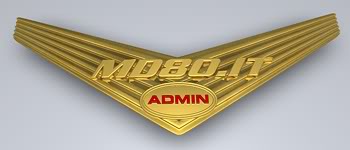In seguito ad una engine failure che ha interessato un 388 Emirates lo scorso Novembre, FAA ha emanato due giorni fa una AD, recepita anche da EASA, riguardante i propulsori Engine Alliance GP7270 e GP7277. Come riportato da AvHerald:
http://avherald.com/h?article=458dbb78&opt=0
"On Nov 20th 2012 the NTSB reported that the #3 engine GP7270 (15,146 hours since new, 1,857 cycles since new) suffered a second stage high pressure turbine nozzle failure resulting in small holes and tears to the high pressure turbine case, however, no debris penetrated the nacelle. The Australian Transportation Safety Board ATSB is conducting an investigation.
L'AD FAA, riportata qui:
http://rgl.faa.gov/Regulatory_and_Guida ... -02-06.pdf
In seguito a quanto rilevato, il raffreddamento non adeguato del 2° stage HPT nozzle può provocare un danneggiamento della parte, bruciatura e danneggiameno del case della turbina e spegnimento del motore. Per prevenire il danneggiamento del 2°stage HPT nozzle, che può provocare uncontrolled fire, spegnimento del motore e danni al velivolo, l'AD prevede frequenti ispezioni boroscopiche della parte e la rimozione dal servizio nel caso in cui sono rilevati fori dovuti a bruciature sul nozzle. Come riporta l'AD:
"We received a report of an engine shutdown and turbine case burn-through, preceded by exceedance of the engine exhaust gas temperature (EGT) limit and loss of engine oil. Investigation revealed that the event was caused by damage to the HPT stage 2 nozzle due to inadequate part cooling. HPT stage 2 nozzles, part numbers (P/Ns) 2101M24G01, 2101M24G02, and 2101M24G03, are identified as having the inadequate cooling design. This condition, if not corrected, could result in HPT stage 2 nozzle failure, leading to uncontrolled fire, engine shutdown, and damage to the airplane". E quindi:
"This AD requires initial and repetitive borescope inspections and removal from service before further flight if burn holes are detected, in HPT stage 2 nozzles, P/Ns 2101M24G01, 2101M24G02, and 2101M24G03. This AD also requires mandatory removal from service of these HPT stage 2 nozzles at the next engine shop visit".
"Initially borescope inspect (360 degrees) the HPT stage 2 nozzle at the following: (i) Before accumulating 1,500 cycles-since-new (CSN), if the nozzle has fewer than 1,450 CSN on the effective date of this AD. (ii) Within the next 50 cycles, if the nozzle has 1,450 or more CSN on the effective date of this AD.
(2) Thereafter, repetitively borescope inspect (360 degrees) the HPT stage 2 nozzle within every 100 additional cycles-in-service.
(3) If during any inspection required by this AD, any burn holes are detected through the surface of the nozzle, remove the nozzle from service before further flight.
At the next engine shop visit, remove HPT stage 2 nozzles P/N 2101M24G01, 2101M24G02, and 2101M24G03 from service".
Paolo
AD FAA riguardante i GP7200
Moderatore: Staff md80.it
- JT8D
- Administrator

- Messaggi: 21151
- Iscritto il: 2 agosto 2005, 20:38
- Località: Limbiate (MB)
- Contatta:
AD FAA riguardante i GP7200
"La corsa di decollo è una metamorfosi, ecco una quantità di metallo che si trasforma in aeroplano per mezzo dell'aria. Ogni corsa di decollo è la nascita di un aeroplano" (Staccando l'ombra da terra - D. Del Giudice)


- JT8D
- Administrator

- Messaggi: 21151
- Iscritto il: 2 agosto 2005, 20:38
- Località: Limbiate (MB)
- Contatta:
Re: AD FAA riguardante i GP7200
Rilasciato il Final Report dell'evento a cui si riferisce l'AD qui sopra:
http://avherald.com/h?article=458dbb78/0000&opt=0
Paolo
http://avherald.com/h?article=458dbb78/0000&opt=0
Paolo
"La corsa di decollo è una metamorfosi, ecco una quantità di metallo che si trasforma in aeroplano per mezzo dell'aria. Ogni corsa di decollo è la nascita di un aeroplano" (Staccando l'ombra da terra - D. Del Giudice)

